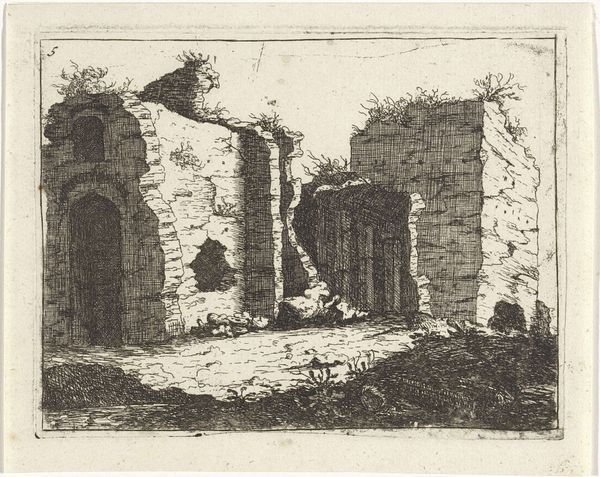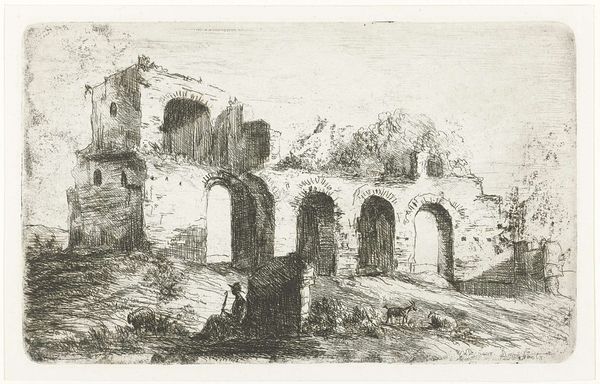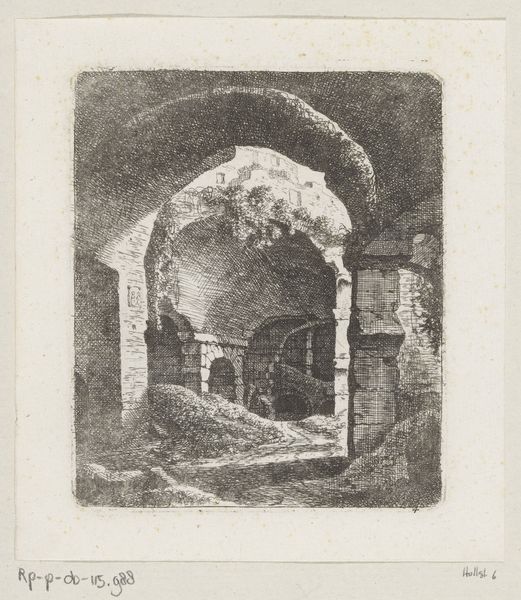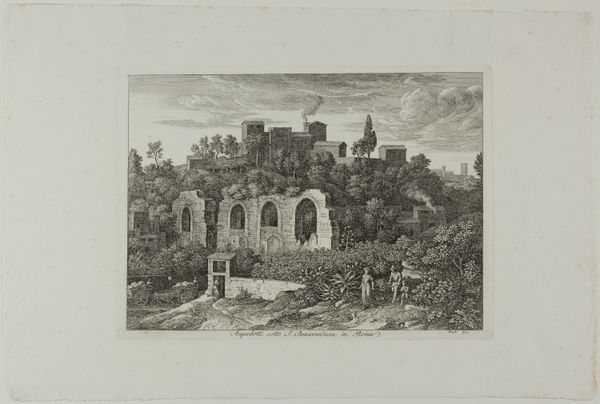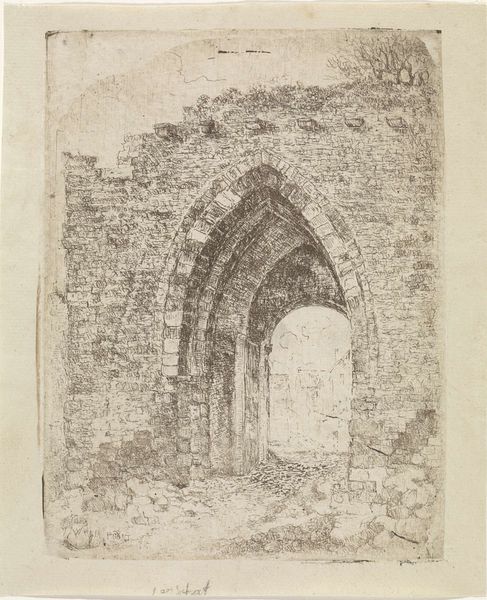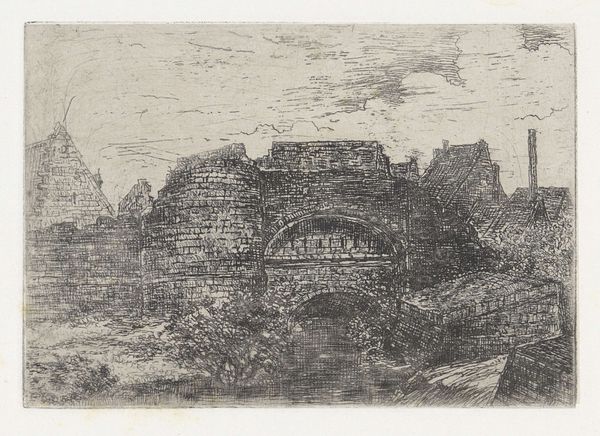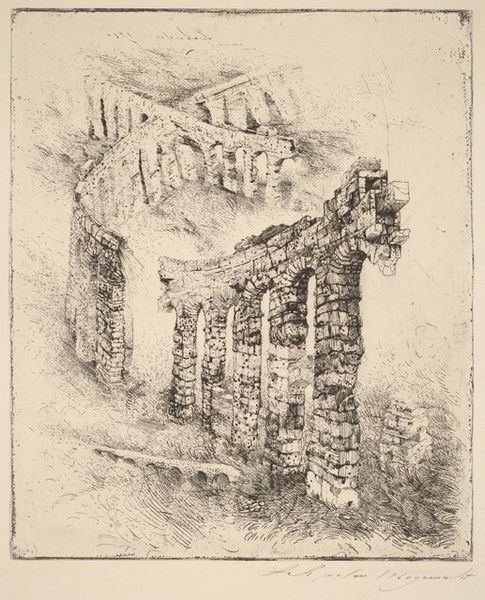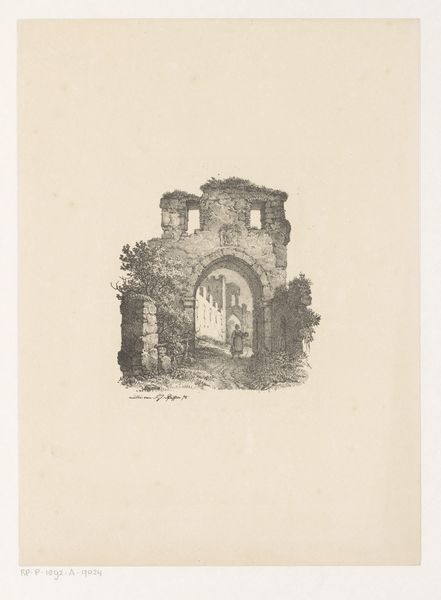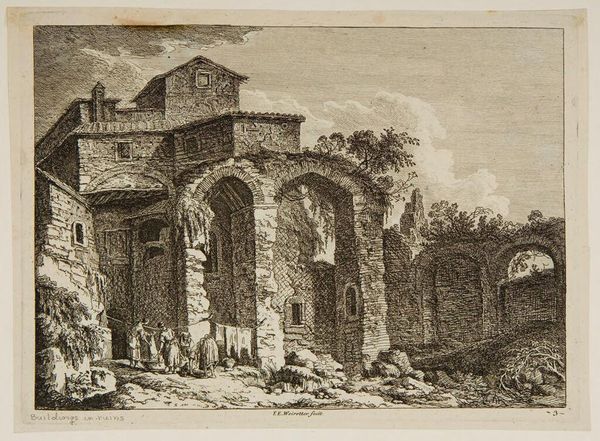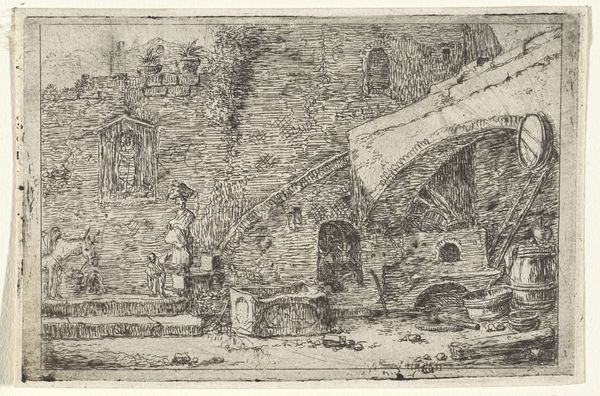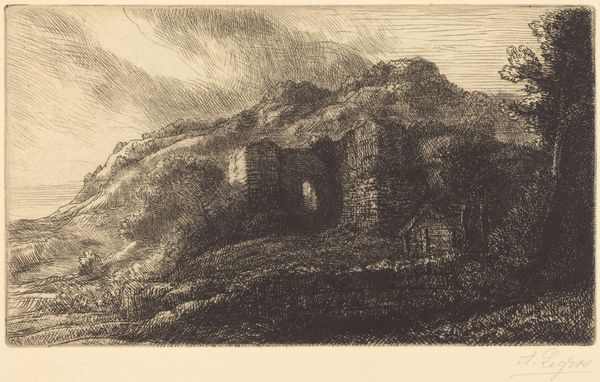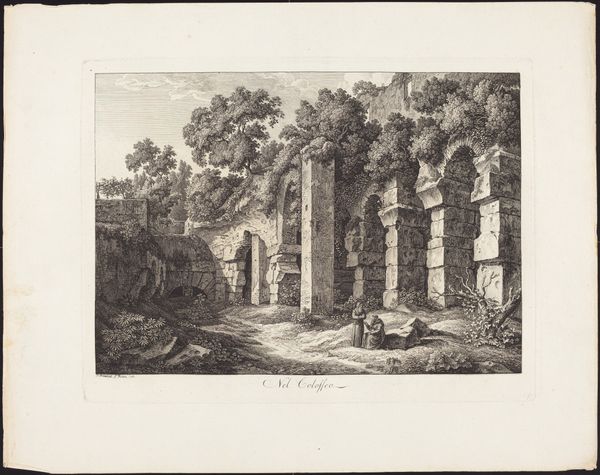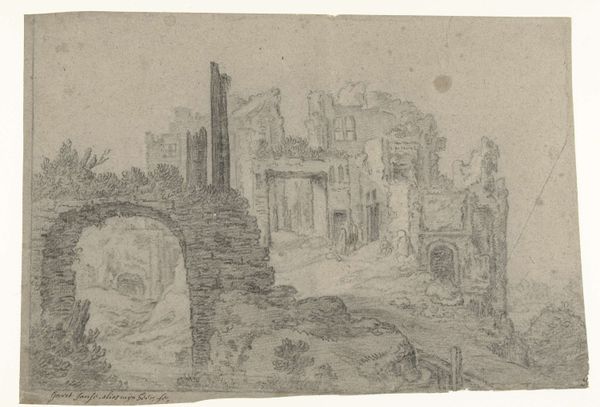
Dimensions: height 108 mm, width 153 mm
Copyright: Rijks Museum: Open Domain
Alexander Schaepkens created this print, Ruïnes, using etching. It's a process that relies on metal, acid, and considerable skill. The image begins as a polished copper plate, its surface coated with a waxy ground. The artist then scratches through this ground with a sharp needle, exposing the metal. When the plate is submerged in acid, the lines are etched, and thus will hold ink. The more time in the acid bath, the deeper and darker the lines will be. The print’s delicate lines capture the rough texture of the ancient stone, conveying a sense of history and decay. The way the light falls across the ruins, casting shadows in the archways, reveals the amount of work involved in achieving this level of detail, showcasing Schaepkens' mastery. Considering the time and labor inherent in etching helps us appreciate the art, and pushes us to expand our understanding of art history beyond traditional confines.
Comments
No comments
Be the first to comment and join the conversation on the ultimate creative platform.
